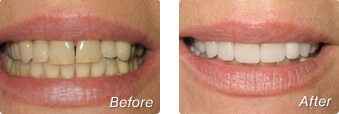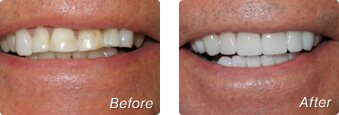Veneers Vs. Braces
Your smile enhances your face value! While most people would love to flash a perfect set of pearlies, not everyone is blessed with straight, well-aligned teeth. Approximately, thirty million people in the U.S. have a broken or missing tooth and at least half of them require treatment to cover them. At least 74% of adults in the U.S. have misaligned or crooked teeth, which is called “malocclusion”.
Misaligned teeth: More than a cosmetic problem
In the past, a crown was the only option available to cover the chipped or broken tooth. Chipped, cracked or damaged tooth may need professional treatment with veneers or braces.
Apart from cosmetic reasons, straight and well-aligned teeth are also easier to clean. If crooked and misaligned teeth are untreated, they can cause pressure on the jaw and the teeth leading to premature cracking, chipping or dental diseases. Some people experience jaw or neck pain over time because of misaligned teeth. Crooked teeth are difficult to clean, leading to an overgrowth of bacteria and plaque.
Dental veneers and braces are the most common treatments offered by orthodontists to improve the appearance of teeth. If you have never worn braces as a child, you may be wondering which of these two options to consider as far as improving your smile is concerned. So let’s break it down – veneers vs. braces?



Veneers provide instant correction
Veneers are used to change or improve the size, shape, color or position of teeth. Veneers were invented way back in 1928 and were made of acrylic. The modern-day veneers are made of porcelain or ceramic. Being very thin, the layer of porcelain will cover the front of a tooth without it being visible.
Dentists determine the way the teeth fill out a person’s smile before deciding on how many veneers would be required, which then need to be modeled based on the dental impressions. Sometimes, doctors use a digital impression machine as well to scan and get the dental impressions faster.
The “no-prep” veneers are fixed using a bonding solution on the teeth and do not need the tooth’s enamel to be removed. The permanent veneers require removal of a part of the enamel. The doctors let the gums heal for a period of two weeks after removing the enamel before placing the permanent veneers.
The veneers take about a week to ten days to make during which time dentists place a temporary veneer. This helps the patients decide if they need any more adjustments on the veneers before the permanent ones are modeled.
With no downtime or elaborate procedures, veneers save time and can be a quick way of getting that beautiful and confident smile. Porcelain veneers are preferred by leading dentists to treat discolored or dull teeth that have no structural damage. Small chips and cracks can be covered with porcelain veneers, besides also correcting the length of teeth to align them.
Veneers work instantly but may not achieve the perfect result in all patients and also does not address underlying dental or gum problems. This is something to think about when comparing veneers vs. braces.
Braces to correct crooked teeth
Orthodontic braces are a long-term treatment for aligning teeth. The procedure takes repeated follow up visits and may turn out to be more expensive than veneers. With invisible or transparent orthodontics, it is possible to hide the braces. The results of braces are long-term but the treatment also may take between two to three years depending on the complexity of the treatment.
Braces traditionally are made of metal that put a constant pressure on the teeth to correct their alignment. There are removable braces as well which can be changed periodically every two weeks until the desired result is achieved. These removable braces, called Invisalign, can be expensive and are not recommended for individuals who have serious dental issues. Other materials such as ceramic and plastic are also used in braces. Lingual braces are those that are placed on the inside of the teeth rather than outside. These are difficult to clean and can be very uncomfortable.
The braces are usually fixed by orthodontists and not by dentists. Post treatment with braces, a retainer is also recommended by doctors to prevent the teeth from returning to the original misaligned position.
With many options available, it can be confusing to choose the right one for you. Consulting leading dentists who specialize in dental treatments is the best course of action.

